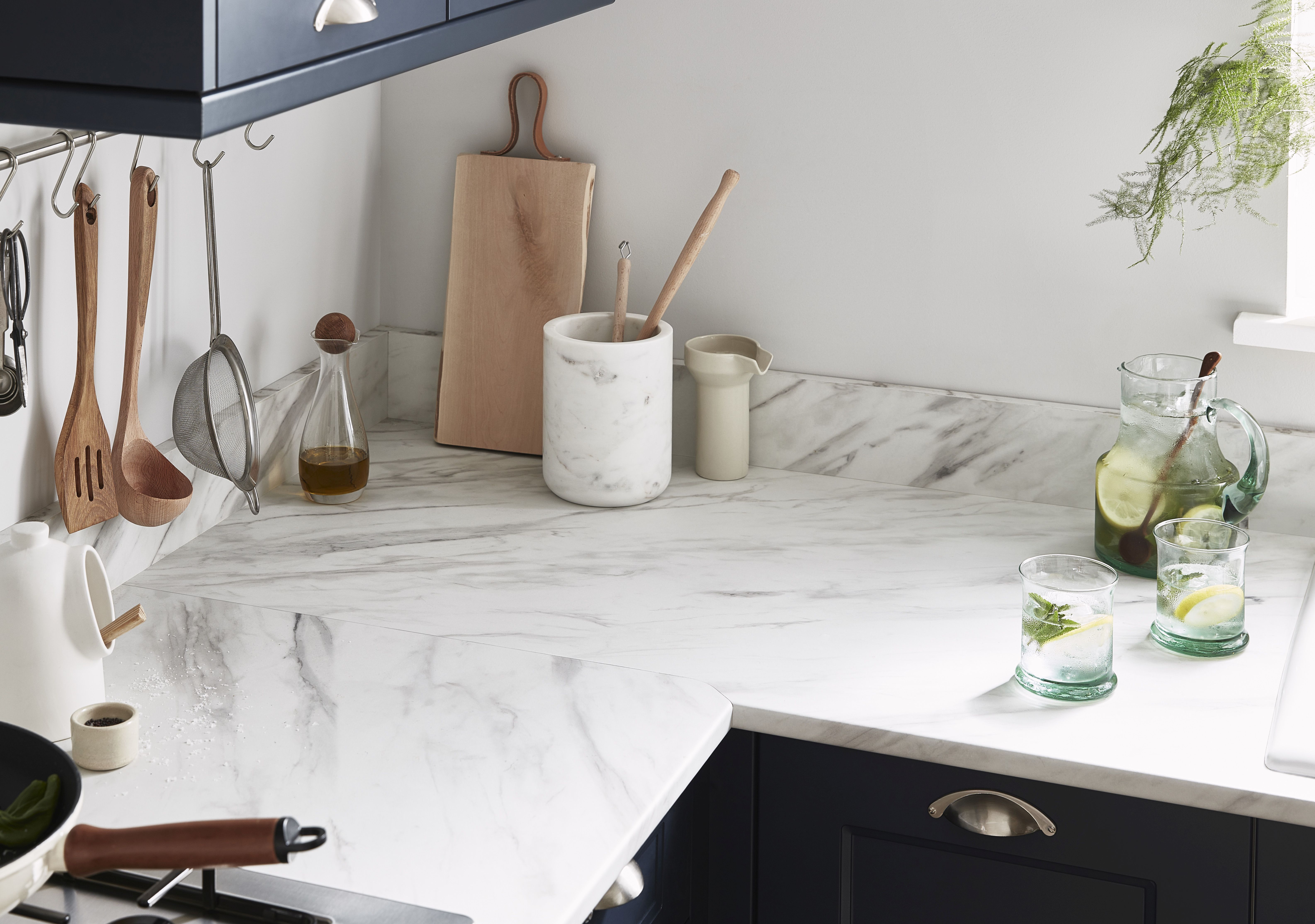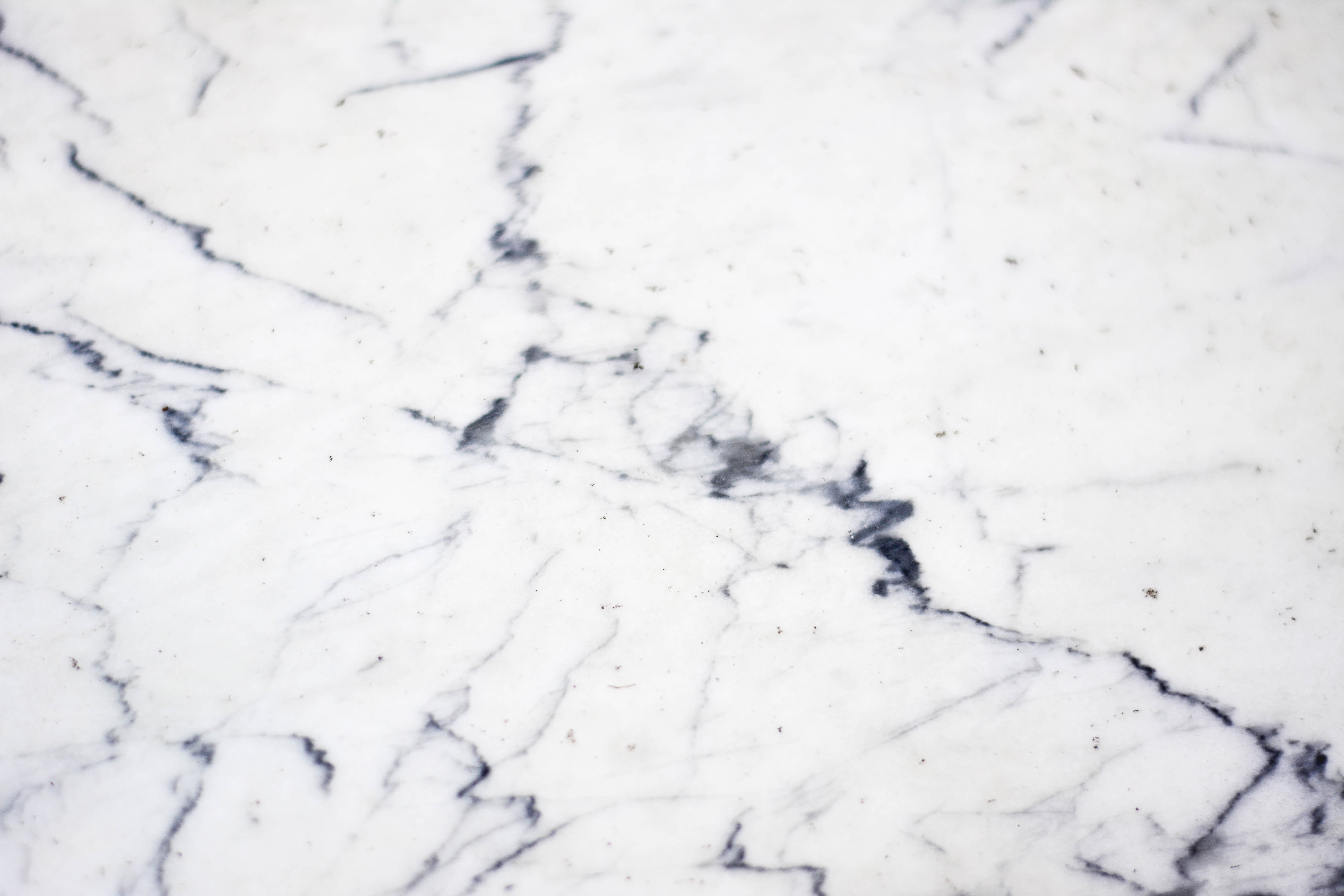How to clean marble – safely remove stains from countertops and floors
Cleaning marble is an art. This is how to polish up and lift stains from kitchen counters, marble floors and other surfaces

Cleaning marble is an art, but a simple one at that. Because this beautiful stone, whether complete with dramatic veining or in its purest translucent form, needs special care to ensure it stays looking wonderful for years to come. Marble is a very soft and porous material so it's not like other kitchen surfaces or flooring and won't take acidic homemade cleaners as we usually like to recommend.
So if you're one of many homeowners who's taken the leap and invested in real marble countertops, floors or even just a small slab on a coffee table for the Gram, we have got you covered on how to clean marble and remove any stains quickly, easily and above all, safely.
The main thing to remember is that marble is sensitive to acids, alkalis and anything abrasive so if you want to use a commercial product, you need to invest in a neutral pH marble cleaner. And, any of your regular homemade cleaning solutions using white vinegar and lemons are simply a no go. Baking soda however, can be used –sparingly – which we'll go into.
- Find more tips on how to clean countertops with our guide.
How to clean marble countertops
Day to day, you can simply use warm water mixed with soap on countertops – adding a little dish or Castille soap if you wish. Use a soft cloth dipped in the soapy water mixture and rub gently it gently, ensuring you leave the surface totally dry.
Never scrub marble, any harsh dish scrubbers or anything that can scratch the surface.
How to clean marble floors
First you need to remove dust and debris from the area. However tempting it is to get out the vacuum, don't as this could do more damage than anything. Simply mop marble floor tiles with a soft, microfibre mop head for the best results. Work in one direction and never drag your mop as even a grain of sand could do damage. Be careful with corners that are prone to a build up of matter
As with countertops, start with wiping it down with hot water then you can use water and a little dish soap or a pH neutral cleaning product for daily cleaning. If you need something a little stronger, you can make a diluted ammonia solution. Using 1/2 cup ammonia to 1 gallon warm water. Be sure to not flood the marble with the solution, and to dry the space thoroughly when completely rinsed with water. Ammonia is a strong cleaning agent so if using, always ventilate the room well and to let the space air out before regular use.
Get small space home decor ideas, celeb inspiration, DIY tips and more, straight to your inbox!
- Got different flooring to clean? This is how to clean a floor like a pro – whatever it's made from.
How to remove stains from marble
Unfortunately, some spills and stains are inevitable. Time is of essence with removing stains from marble: as soon as you've noticed a spill, soak up as much of as you can with paper towel. It's very important not to rub, as this will drive the spill deeper into the marble.
Once you've soaked up as much of the spill as you're able, tackle the stain that has formed on the marble surface. According to the Marble Institute, most organic stains on marble can be tackled with 12-per-cent hydrogen peroxide solution, with a few drops of ammonia added. Again, do not use anything acidic to try and clean marble – lemon, vinegar are popular home cleaning remedies that are unsuitable for marble and will make the stain worse.
If you have a stain that has set, you can try and remove it with a cleaning product containing acetone. We've had considerable success using nail varnish remover. Dip a cotton ball in the acetone and begin gently dabbing away at the stain, without hard rubbing.
Can you use baking soda on marble?
Some people use baking soda on marble, and it does come with its benefits – deodorizing, sanitizing and stain removing – so long as it's used carefully and has limited contact with the surface.
To clean a marble surfaces with baking soda, sprinkle a little on to the area then rub (don't scrub) this around using a soft cloth. You then need to rinse the area and dry it thoroughly with a soft cloth, trying to not let the baking soda sit on the surface for too long – work quickly. As baking soda is an alkali, the water will neutralize the area again so it is essential you wipe it down well.
Try to limit the amount of times you clean your marble surface with baking soda. We like to break it up with a pH neutral cleaner in between.
- Find out what else cleaning with baking soda can do for your home.
How do I get my marble to shine again?
It’s not wise to polish marble using commercial products as this can cause the surface to be slippery which is especially dangerous if you have marble floors. Instead, you can buff floors with a dry towel to ensure they are free from cleaning agents and water for a shinier surface.
You can also use a paste of baking soda and water in equal parts, spreading it carefully over the area and letting it dry before removing the remnants with water and a soft cloth. We would recommend testing this on a small inconspicuous area to ensure your marble takes it well, before rolling it out elsewhere.
How do you remove cloudiness from marble?
If your marble looks cloudy and lightly discolored, this is actually a sign of etching as staining tends to be darker than the marble itself. To remedy this, try using the above methods and be careful going forward that you're not leaving anything on the surface that shouldn't be there like acids, water or anything that could oxidize and leave a mark.

- Considering marble as hallway flooring? We approve and here are some more ideas to choose from...
How to protect marble surfaces
- Ensure you purchase the right marble: It's not all made with equal intent, so remember that if you're buying marble countertops, to ensure it's food and drink safe.
- Seal marble monthly: Treating marble surfaces with a sealant once a month or so will give you more time to treat any spills and stains, as and when they occur. Note that a sealant won't make marble stain-proof, but it will act as a mild stain-repellant, buying you a bit more time to deal with spills before they've had a chance to set into the stone.
- Use the right products: Our favorite product for protecting marble is the HG Natural Stone Protector but you should check with the manufacturer of your counters or other marble goods to see what they recommend. Be sure to never use anything acidic, even homemade with vinegar, lemon and the likes as this is a no no for marble.
- Test your cleaner first: Especially if you've gone for a stronger product that could bleach your marble, first try it in an inconspicuous spot.
- Add in protection: If you have a marble top coffee table, think coasters. If you have marble in a high traffic room, think area rugs. If you have marble beneath couches and heavy furniture, think furniture pads and limiting coffee drinking!
- Tackle spills immediately: In saying all of that, marble surfaces are there to be enjoyed (more often than not with a glass of wine of cup of tea in hand) so, be sure to tend to any spills straight away using just warm water and a little dish soap. Drying thoroughly.
- Never leave standing water: To reiterate, standing water is very damaging to marble so dry all surfaced thoroughly.
- Be gentle: For once, we've recommending less elbow grease. When cleaning marble, rub products in gently, never scrub or overwork the stone.
Insta-ready👌
Anna is a professional writer with many years of experience. She has a passion for contemporary home decor and gardening. She covers a range of topics, from practical advice to interior and garden design.